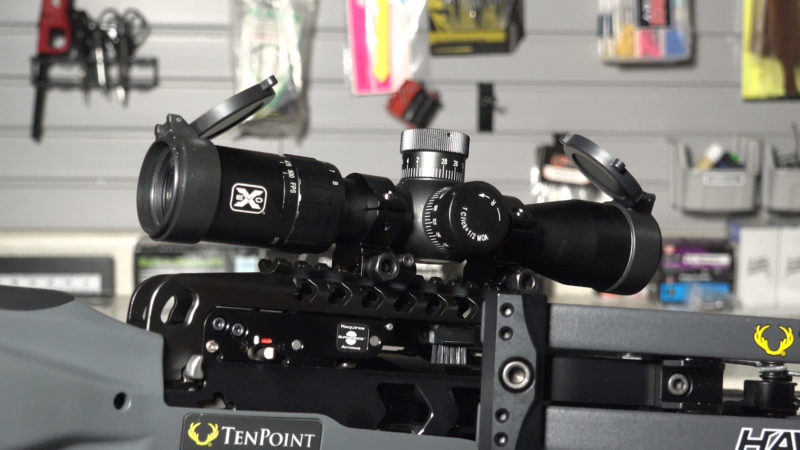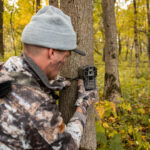Most crossbows are now sold with a scope as part of the package. There are 2 main types of crossbow scopes out there, the Multi-Line (or Multi-Reticle), and the Variable Power scope. There are many similarities between the two scopes, but the main difference is that the Variable Power scope can be calibrated for the arrow speed.
Check out this video on how to sight in a Variable Power scope…
Variable Power Scope Characteristics
A Variable Power scope is a drop-compensating reticle scope, that has a variable speed setting which allows you to calibrate it to match the arrow speed. Since you can set it up to match the exact arrow, it allows for a more precise calibration, and eliminates the issue with Multi-Line scope reticles representing distances that don’t match 10-yard increments.
The reticles in a Variable Power scope will always represent 10 yard increments, when sighted in properly. It’s called a Variable Power scope because the power of the magnification varies depending on how you adjust the speed dial.
How To Sight In The Scope
The first thing you’ll need to do before sighting in a Variable Power scope, is determine the arrow speed. This can be done with a chronograph, or by looking up your crossbow’s specs.
Once you’ve determined your arrow speed, you will then adjust the dial on the scope to match up with the arrow speed. After that, take aim at your target from exactly 20 yards away, and make sure to use some type of rest so that you aren’t trying to sight in while shooting free hand.

After taking a shot at 20 yards, make any elevation or windage adjustments if needed. Once you’re dialed-in at 20 yards, move back to 40 yards and use the correlating reticle. When at 40 yards, you shouldn’t need to make any elevation adjustments, but if you’re hitting high or low, use the speed dial instead of the scope’s elevation.
At 40 yards, any minor issues with your windage will become amplified. So if you’re hitting to the right or left of where you’re aiming at 40 yards, use the windage adjustment until you’re dead on. After that, you should be dialed in at every other distance. But make sure to continually shoot throughout the summer and hunting season to make sure you’re still sighted in.
Tips to Remember
- Always determine and set the speed on your scope before starting the sighting-in process.
- Some speed dials on scopes have a locking ring. So make sure you unlock that ring prior to adjusting the speed dial, and lock it back in once it’s set.
- Be sure to shoot out at farther distances of 40 to 50 yards to make any fine tune adjustments.
- If you’ve done the sighting-in process properly, your 10-yard increments should be dead on. If they are not, you need to make a few adjustments to the speed dial.





